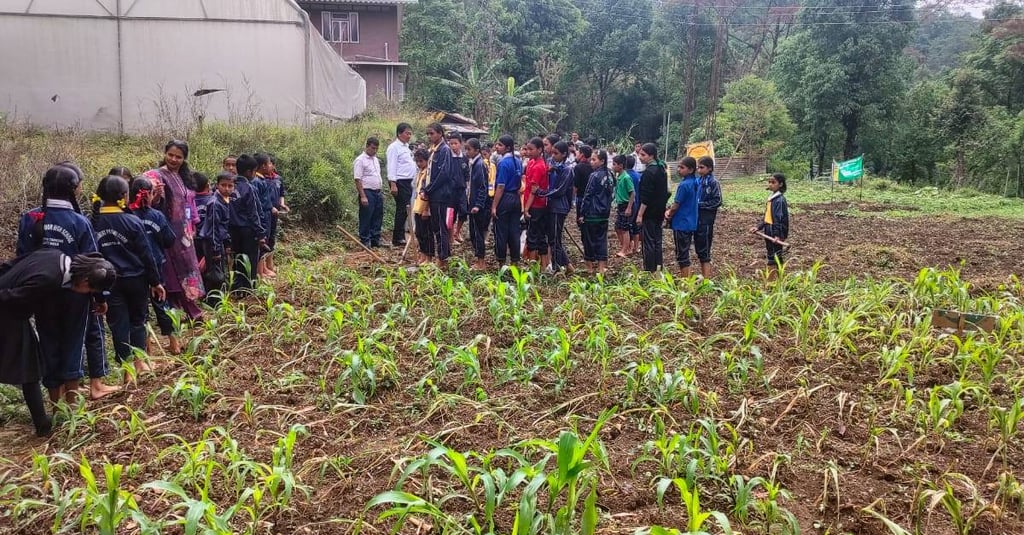Gangtok’s Badong Thansing Junior High School turns wasteland into farmland with students' help
Plans are in place to plant seasonal crops, including vegetables that can be used in the school’s mid-day meal programme.
LOCAL


In Gangtok district, a small school is making a big difference; one step at a time, every month. Badong Thansing Junior High School, located in Thansing ward under Khamdong GPU, is showing what real change looks like at the ground level.
Every 5th of the month, the school observes what it proudly calls "School Environment Day". This has become a regular practice, led by the school’s hardworking and dedicated Headmaster, Shri Rosan Nepal. With strong support from both teaching and non-teaching staff, as well as the students, the initiative has now completed its 14th edition.
But this month’s Environment Day was extra special.
The school has started a new and meaningful activity; transforming barren land near the school into green, cultivated land. This is not just about planting; it is about learning, growing and building something together as a community. On this day, the school grounds came alive with energy and purpose.
The event saw participation not only from the school staff and students but also from important members of the local community. The Area Education Officer (AEO) of Khamdong BAC, Panchayats, Zilla Panchayat members, School Management Committee (SMC) members, and parents all joined hands in the activity.
Everyone gathered in the field, working side by side with tools, seeds and a vision; to make the land bloom again.
Speaking on the occasion, Headmaster Rosan Nepal said, “Our goal is not just to green the land but also to teach students the value of hard work and nature. When children learn through action, they remember it for life.”
For many students, this was their first time handling farming tools or sowing seeds. But they did it with great interest and smiles on their faces. Teachers guided them gently, explaining how soil needs care, how crops grow, and why protecting nature matters. Even the youngest children took part, watering plants and picking up dried leaves from the field.
The school believes that such activities will help children connect with their roots and understand the importance of land and farming in everyday life. In a time when technology and screens are everywhere, this return to soil is refreshing and inspiring.
The barren land being used was earlier left unused for many years. Now, it is being slowly converted into a learning ground; one that will grow vegetables, flowers and more importantly, strong young minds.
Plans are in place to plant seasonal crops, including vegetables that can be used in the school’s mid-day meal programme. This way, students will also understand the connection between farming and food on their plates.
In the coming months, the school hopes to involve more community members and possibly partner with agriculture experts to guide the students further.
What started as a small monthly activity has now become a full community effort. It is not just about trees or farming. It is about building a habit of care, action, and responsibility—towards the land, the school, and each other.
And it all begins on the 5th of every month.
